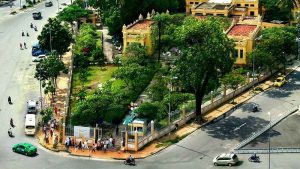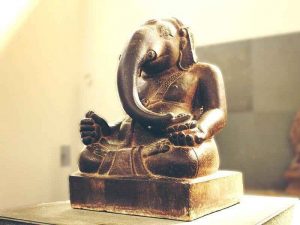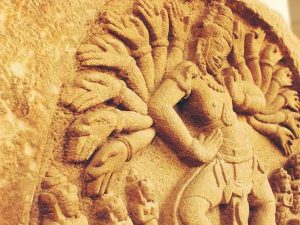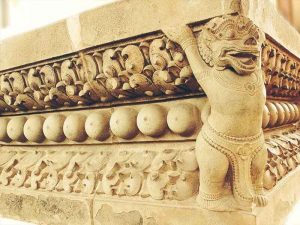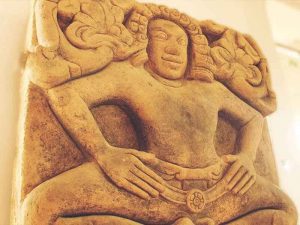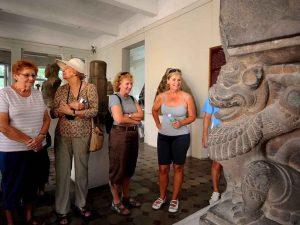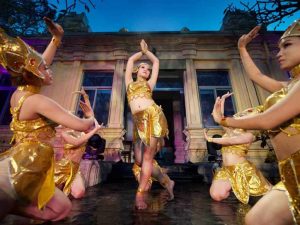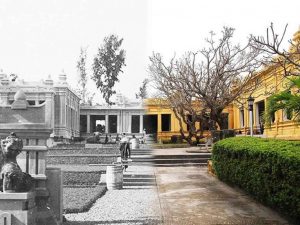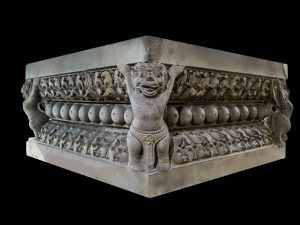Address: 02 2/9 street, Hai Chau District, Da Nang City
Price: ~2 USD
Open time: 08:00 – 11:30; 14:00 – 16:30
Visit duration: 01h00
Best time Good for travel: First time visit
Price range: ~2 USD
About:The Museum’s first building was opened in 1919, but many Cham sculptures collected in Da Nang and elsewhere were brought to the site over the preceding 20 years.
The collection was begun by French archaelogists and experts from L’École Francaise d’Extrême Orient (EFEO). Some artefacts were sent to Paris and others to the Ha Noi and Sai Gon (now Ho Chi Minh City) museums, but many typical objects were left in Tourane (now Da Nang).
The establishment of a Cham sculpture museum in Da Nang was first proposed in 1902 by the Department of Archaelogy of EFEO. Henri Parmentier, a prominent archaelogist of the department, made great contributions to the compaign for its construction. The first building was designed by two French architects. M. Deleval and M. Auclair. The Museum has been extended twice, but the character of the original architecture has been well preserved.
The first extension was in the 1930s, with two new galleries providing display space for the objects added in the 1920s and 1930s. Henri Parmentier directed the display based on the areas where the sculptures were found. The 1111 square metre of floor space was arranged into the My Son , Tra Kieu, Dong Duong and Thap Mam galleries and the Quang Tri, Quang Ngai, Binh Dinh, Kon Tum corridors.
In 2002, the Museum was again extended with the two-storey building provide an extra 1111 square metre. The new building provides space for display, storage, a library, restoration workshop and offices for staff.
Before 2007, the Museum was managed by the Da Nang Museums, and administrative organ in charge of the cities’ museums and heritage. On 02 July 2007, the City authorities affiliated the Da Nang Museum of Cham Sculpture with the City Department of Culture, Sport and Tourism.
What to explore:
The sculptured artefacts in the collection of the Da Nang Museum of Cham Sculpture are mainly of sandstone and terra cotta with a few bronze pieces. There is also a collection of clothing, photographs, films and digital discs.
The sandstone sections are the most important and include pedestals, statues of gods, holy animals and symbols and architectural decorations from Cham temples and worshiping sites.
The gods are identified with reference to the Indian mythology based on the holy animal the god often rode or the objects carried.
The pieces are indetified according to where they were found or excavated, or the form or function of the object, including the round, relief, pedestal and architectural details. Thus criteria are explicit and uncontrovesial.
Some researchers have used similarities, e.g. decorative design, the shape of hair curls, costumes, etc., to classify the Cham sculpture into several styles. Then, by referring to dates, which in some cases are clear enough, or to the styles in neighbouring countries, they have decided on the evolution of the styles. Each is named for the locality where a typical object of the style was found. For example, “the My Son E1 style” is applied to all objects bearing main features similar to those found in temple E1 at My Son in Quang Nam. The Dong Duong style refers to all objects similar to the sculptures from the Dong Duong relic in Quang Nam. The method of classification depends primarily on the conceptions and intepretation of different scholars.
How to get there:
From Da Nang airport (about 4 km to the museum)
From the Da Nang railway station (about 6 km to the museum)
From Hoi An (about 30 km to the museum)
Reviews:
A wonderful complement to My Son and Po Nagar
Peaceful and context to Vietnam’s rich culture
A great place for 10th century cham art
Great Collection in Beautiful Colonial Archtitecture
Treasure of My Son under the roof
Travel tips:
– There is an onsite shop selling imitation pieces and there are also English-language guidebooks for sale
– Photography and videography are permitted with handheld cameras. Special photography/filming sessions require special permission. No images of the Museum or its collections may be reproduced, distributed in any media, including websites, without permission from the Da Nang Museum of Cham Sculpture.
[wptab name=”Exhibitions”]
![]() Quang Tri Gallery: The Quang Tri collection was acquired by the museum in 1918 and 1935 and includes 14 works. Mostly found in Nam Giap, Ha Trung, Thach An and Da Nghi, they date from the 7th to 8th century.
Quang Tri Gallery: The Quang Tri collection was acquired by the museum in 1918 and 1935 and includes 14 works. Mostly found in Nam Giap, Ha Trung, Thach An and Da Nghi, they date from the 7th to 8th century.
![]() Quang Nam Gallery : 32 works dating from 8th to 11th century and collected from many places in Quang Nam Province are on display in this gallery
Quang Nam Gallery : 32 works dating from 8th to 11th century and collected from many places in Quang Nam Province are on display in this gallery
![]() Quang Ngai Gallery: The Quang Ngai gallery displays 14 works, mostly dating from the 11th to 11th century, found in Chanh Lo and elsewhere in Quang Ngai province.
Quang Ngai Gallery: The Quang Ngai gallery displays 14 works, mostly dating from the 11th to 11th century, found in Chanh Lo and elsewhere in Quang Ngai province.
![]() Tra Kieu Gallery: 14 works dating from 7th to 8th
Tra Kieu Gallery: 14 works dating from 7th to 8th
![]() My Son Gallery: My Son was the most sacred place of Champa kingdom. It is on the present day Quang Nam province, about 30 kilometres west of the site of Simhapura, the capital of Champa until 1111 CE. Protected by a circle of mountains, there were over 70 structures of brick and stone, most of which were dedicated to Siva.
My Son Gallery: My Son was the most sacred place of Champa kingdom. It is on the present day Quang Nam province, about 30 kilometres west of the site of Simhapura, the capital of Champa until 1111 CE. Protected by a circle of mountains, there were over 70 structures of brick and stone, most of which were dedicated to Siva.
![]() Dong Duong Gallery
Dong Duong Gallery
![]() Thap Mam Gallery: There are 67 works from those excavations on display in the Thap Mam – Binh Dinh gallery of Cham Museum.
Thap Mam Gallery: There are 67 works from those excavations on display in the Thap Mam – Binh Dinh gallery of Cham Museum.
![]() The Enlarged Gallery: Officially opened on 28th April 2004, the enlarged buiding is home to a new collection of approximately 150 works of various styles of Cham art mainly collected after 1975.
The Enlarged Gallery: Officially opened on 28th April 2004, the enlarged buiding is home to a new collection of approximately 150 works of various styles of Cham art mainly collected after 1975.
[/wptab]
[wptab name=”Getting to the Museum”]
![]() From airport: 4km away, taxi recommended
From airport: 4km away, taxi recommended
![]() From train station: 6km away, go by taxi, motorbike or bicycle
From train station: 6km away, go by taxi, motorbike or bicycle
![]() From Hoi An: 30km away, go by taxi, bus or motorbike
From Hoi An: 30km away, go by taxi, bus or motorbike
[/wptab]
[wptab name=”View map”]
[/wptab]
[end_wptabset]
